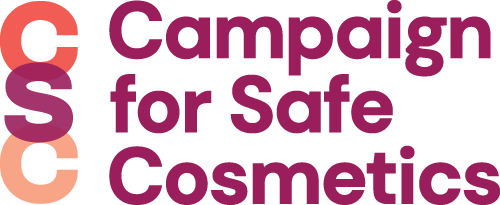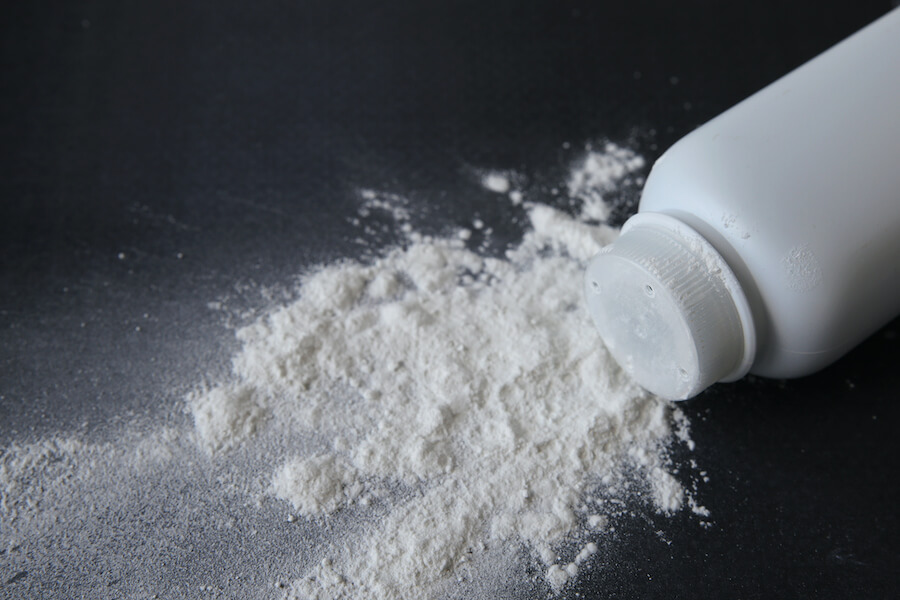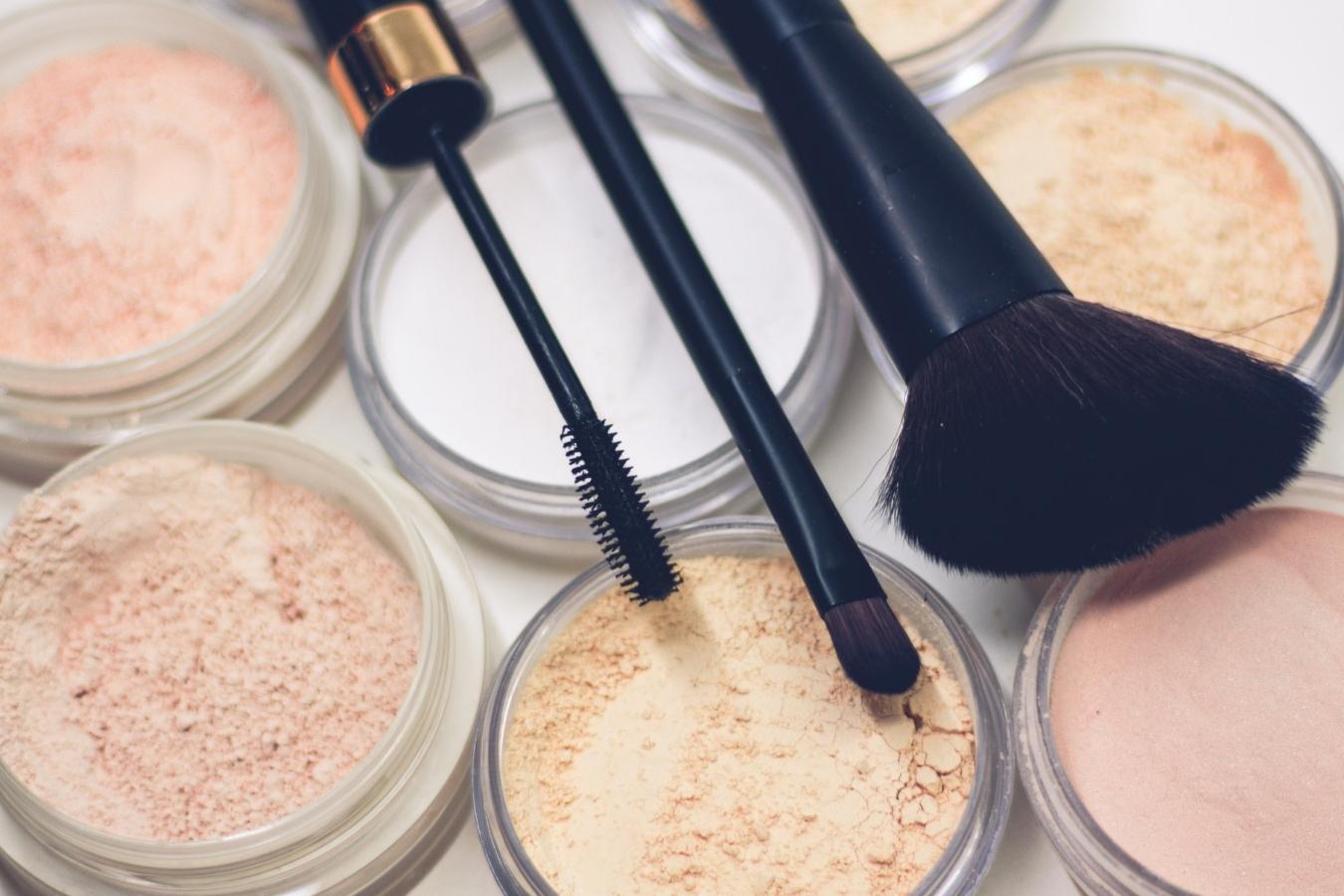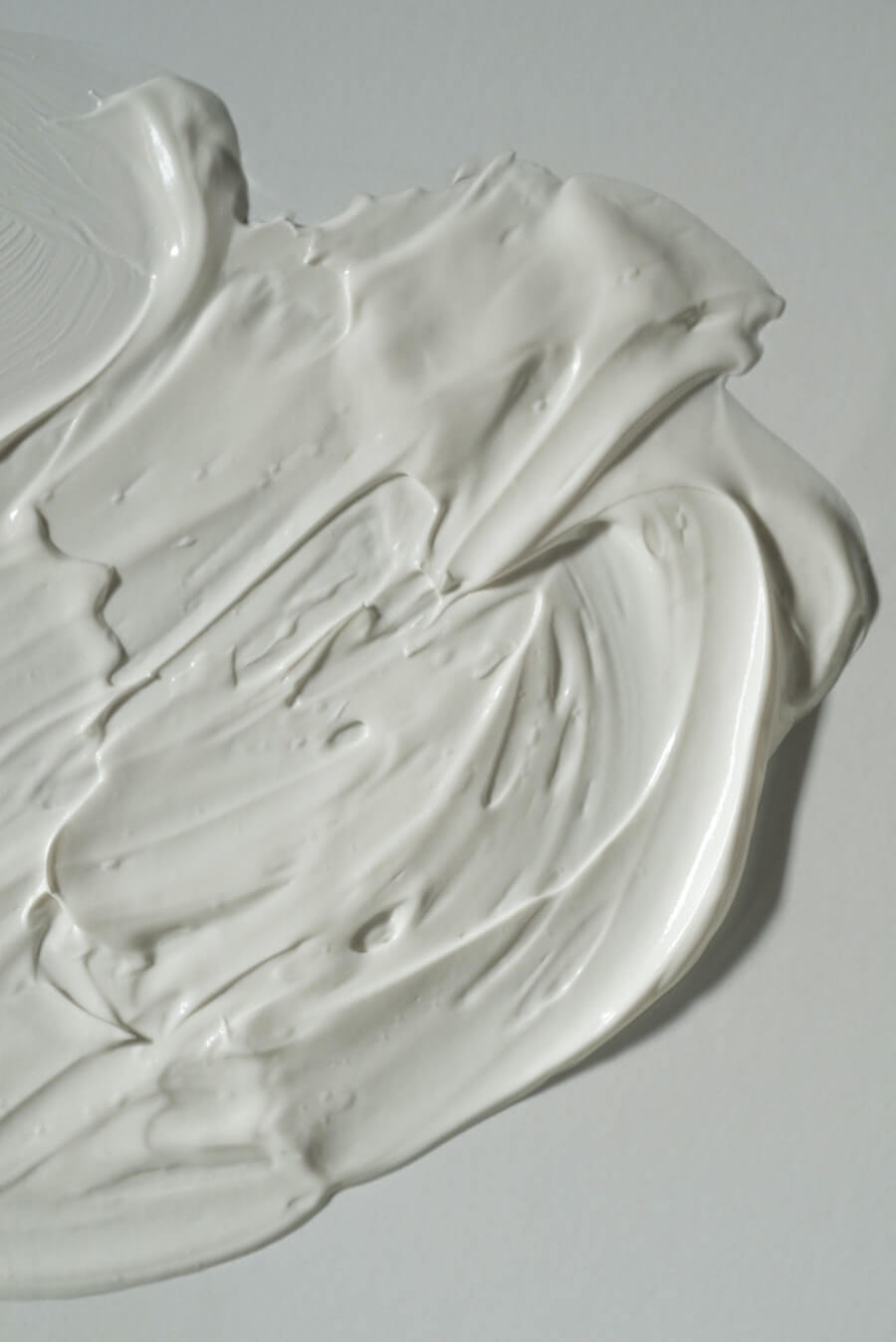[1] FDA. Talc. U.S. Department of Health and Human Services, 2014. Available online: http://www.fda.gov/Cosmetics/ProductsIngredients/Ingredients/ucm293184.htm. Accessed April 22, 2022.
[2]International Agency for Research on Cancer. Carbon black, titanium dioxide, talc. IARC Monographs on the Evaluation of Carcinogenic Risks to Humans, vol. 93, pp 1-419, 2010. Available online: http://monographs.iarc.fr/ENG/Monographs/vol93/mono93.pdf. Accessed April 22, 2022.
[3] International Agency for Research on Cancer. Carbon black, titanium dioxide, talc. IARC Monographs on the Evaluation of Carcinogenic Risks to Humans, vol. 93, pp 1-419, 2010. Available online: http://monographs.iarc.fr/ENG/Monographs/vol93/mono93.pdf. Accessed April 22, 2022.
[4] International Agency for Research on Cancer. Carbon black, titanium dioxide, talc. IARC Monographs on the Evaluation of Carcinogenic Risks to Humans, vol. 93, pp 1-419, 2010. Available online: http://monographs.iarc.fr/ENG/Monographs/vol93/mono93.pdf. Accessed April 22, 2022.
[5] FDA. Talc. U.S. Department of Health and Human Services, 2014. Available online: http://www.fda.gov/Cosmetics/ProductsIngredients/Ingredients/ucm293184.htm. Accessed April 22, 2022.
[6] International Agency for Research on Cancer. Asbestos (chrysotile, amosite, crocidolite, tremolite, actinolite, and anthophyllite). IARC Monographs, vol. 100C, pp 219-309, 2012. Available online: http://monographs.iarc.fr/ENG/Monographs/vol100C/mono100C-11.pdf. Accessed April 22, 2022.
[7] Finley B, Pierce J, Phelka A, Adams R, Paustenbahc D, Thuett K, Barlow C. Evaluation of tremolite asbestos exposures associated with the use of commercial products. Critical Reviews in Toxicology, vol. 42, no. 2, pp 119-146, 2012.
[8] Moon M, et al. Risk assessment of baby powder exposure through inhalation. Toxicol. Res., vol. 27, no. 3, pp 137-141, 2011. Available online: https://www.ncbi.nlm.nih.gov/pmc/articles/PMC3834382/. Accessed April 22, 2022.
[9] Lopez-Galindo A, Viseras C, Cerezo P. Compositional, technical, and safety specifications of clays to be used as pharmaceuticals and cosmetic products. Applied Clay Science, vol. 36, pp 51-63, 2007.
[10] Finley B, Pierce J, Phelka A, Adams R, Paustenbahc D, Thuett K, Barlow C. Evaluation of tremolite asbestos exposures associated with the use of commercial products. Critical Reviews in Toxicology, vol. 42, no. 2, pp 119-146, 2012.
[11] Baan R. Carcinogenic hazards from inhaled carbon black, titanium dioxide, and talc not containing asbestos or asbestiform fibers: recent evaluations by an IARC Monographs working group. Inhalation Toxicology, vol. 19, no. Suppl. 1, pp 213-228, 2007.
[12] Shakoor A, Rahatullah A, Shah A, Zubairi A. Pulmonary talcosis 10 years after brief teenage exposure to cosmetic talcum powder. BMJ Case Reports, pp 1-5, 2011. Available online: https://www.ncbi.nlm.nih.gov/pmc/articles/PMC3185388/. Accessed April 22, 2022.
[13] Garlich F, Nelson L. Inhalation of baby powder. Emergency Medicine, vol. 43, no. 1, pp 17-20, 2013. Available online: https://cdn.mdedge.com/files/s3fs-public/Document/September-2017/043010017.pdf. Accessed April 22, 2022.
[14] Matina F, Collura M, Maggio M, Vitulo P, Piparo C, Corsello G. Inhaled surfactant in the treatment of accidental talc powder inhalation: a new case report. Italian Journal of Pediatrics, vol. 37, pp 47, 2011. Available online: https://ijponline.biomedcentral.com/articles/10.1186/1824-7288-37-47. Accessed April 22, 2022.
[15] IARC. Agents classified by the IARC Monographs, Volumes 1-112, 2015. Available online: http://monographs.iarc.fr/ENG/Classification/ClassificationsAlphaOrder.pdf. Accessed April 22, 2022.
[16] International Agency for Research on Cancer. Carbon black, titanium dioxide, talc. IARC Monographs on the Evaluation of Carcinogenic Risks to Humans, vol. 93, pp 1-419, 2010. Available online: http://monographs.iarc.fr/ENG/Monographs/vol93/mono93.pdf. Accessed April 22, 2022.
[17] Merritt M, Green A, Nagle C, Webb P, Australian Cancer Study (Ovarian Cancer), Australian Ovarian Cancer Study Group. Talcum powder, chronic pelvic inflammation and NSAIDS in relation to risk of epithelial ovarian cancer. Int. J. Cancer, vol. 122, pp 170-176, 2008.
[18] Rosenblatt K, Weiss N, Cushing-Haugen K, Wicklund K, Rossing M. Genital powder exposure and the risk of epithelial ovarian cancer. Cancer Causes Control, vol. 22, pp 737-742, 2011. Available online: https://pubmed.ncbi.nlm.nih.gov/21516319/. Accessed April 22, 2022.
[19] Heller D, Westhoff C, Gordon R, Katz N. The relationship between perineal cosmetic talc usage and ovarian talc particle burden. Am J Obstet Gynecol, vol. 174, pp 1507-1510, 1996.
[20] Cramer D, Welch W, Berkowitz R, Godleski J. Presence of talc in pelvic lymph nodes of a woman with ovarian cancer and long-term genital exposure to cosmetic talc. Obstretrics and Gynecology, vol. 110, no. 2, pp 498-501, 2007. Available online: https://pubmed.ncbi.nlm.nih.gov/17666642/. Accessed April 22, 2022.
[21] Karageorgi S, Gates M, Hankinson S, De Vivo I. Perineal use of talcum powder and endometrial cancer. Cancer Epidemiology, Biomarkers & Prevention, vol. 19, no. 5, pp 1269-1275, 2010. Available online: https://www.ncbi.nlm.nih.gov/pmc/articles/PMC2866017/. Accessed April 22, 2022.
[22] Webb P. Environmental (nongenetic) factors in gynecological cancers: update and future perspectives. Future Oncology, vol. 11, no. 2, pp 295-307, 2015.
[23] Crawford L, Reeves K, Luisi N, Balasubramanian R, Sturgeon S. Perineal powder use and risk of endometrial cancer in postmenopausal women. Cancer Causes Control, vol. 23, pp 1673-1680, 2012. Available online: https://pubmed.ncbi.nlm.nih.gov/22875750/. Accessed April 22, 2022.
[24] Karageorgi S, Gates M, Hankinson S, De Vivo I. Perineal use of talcum powder and endometrial cancer. Cancer Epidemiology, Biomarkers & Prevention, vol. 19, no. 5, pp 1269-1275, 2010. Available online: https://www.ncbi.nlm.nih.gov/pmc/articles/PMC2866017/. Accessed April 22, 2022.
[25] Terry K, et al. Genital powder use and risk of ovarian cancer: a pooled analysis of 8,525 cases and 9,859 control. Cancer Prevention Research, vol. 6, no. 8, pp 811-821, 2013.
[26] Rosenblatt K, Weiss N, Cushing-Haugen K, Wicklund K, Rossing M. Genital powder exposure and the risk of epithelial ovarian cancer. Cancer Causes Control, vol. 22, pp 737-742, 2011. Available online: https://pubmed.ncbi.nlm.nih.gov/21516319/. Accessed April 22, 2022.
[27] Finkelstein M. Malignant mesothelioma incidence among talc miners and millers in New York State. American Journal of Industrial Medicine, vol. 55, pp 863-868, 2012. Available online: https://onlinelibrary.wiley.com/doi/abs/10.1002/ajim.22063. Accessed April 22, 2022.
[28] Baan R. Carcinogenic hazards from inhaled carbon black, titanium dioxide, and talc not containing asbestos or asbestiform fibers: recent evaluations by an IARC Monographs working group. Inhalation Toxicology, vol. 19, no. Suppl. 1, pp 213-228, 2007.
[29] Akhtar M, Ahamed M, Khan M, Alrokayan S, Ahmad I, Kumar S. Cytotoxicity and apoptosis induction by nanoscale talc particles from two different geographical regions in human lung epithelial cells. Environmental Toxicology.
[30] Gordon R, Fitzgerald S, Millette J. Asbestos in commercial cosmetic talcum powder as a cause of mesothelioma in women. International Journal of Occupational and Environmental Health, vol. 20, no. 4, 318-332, 2014. Available online: https://www.ncbi.nlm.nih.gov/pmc/articles/PMC4164883/. Accessed April 22, 2022.
[31] Shakoor A, Rahatullah A, Shah A, Zubairi A. Pulmonary talcosis 10 years after brief teenage exposure to cosmetic talcum powder. BMJ Case Reports, pp 1-5, 2011. Available online: https://www.ncbi.nlm.nih.gov/pmc/articles/PMC3185388/. Accessed April 22, 2022.
[32] Van Huisstede A, Hegt V, Otte-Holler I, Looijen-Salamon M, Rudolphus A. Talcosis due to abundant use of cosmetic talcum powder. European Respiratory Review, vol. 19, no. 116, pp 165-168, 2010. Available online: https://err.ersjournals.com/content/19/116/165. Accessed April 22, 2022.
[33] Magon P. Reversible lung disease due to abundant use of talcum powder. Indian J Pediatr, vol. 79, no. 10, pp 1383, 2012.
[34] Keskin N, Teksen Y, Ongun E, Ozay Y, Saygih H. Does long-term talc exposure have a carcinogenic effect on the female gentical system of rats? An experimental pilot study. Arch Gynecol Obstet, vol. 280, pp 925-931, 2009. Available online: https://pubmed.ncbi.nlm.nih.gov/19301023/. Accessed April 22, 2022.
[35] Yumrutas O, Kara M, Atilgan R, Kavak S, Bozgeyik I, Sapmaz E. Application of talcum powder trichloroacetic acid and silver nitrate in female rats for non-surgical sterilization: evaluation of the apoptotic pathway mRNA and miRNA genes. Int. J. Exp. Path., vol. 96, pp 111-115, 2015. Available online: https://www.ncbi.nlm.nih.gov/pmc/articles/PMC4459804/. Accessed April 22, 2022.
[36] European Commission. Annex III. Available online: https://echa.europa.eu/cosmetics-restricted-substances/-/legislationlist/substance/100.035.328. Accessed April 22, 2022.


































